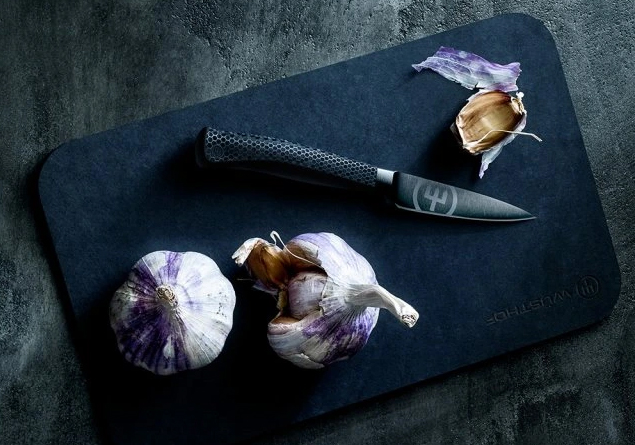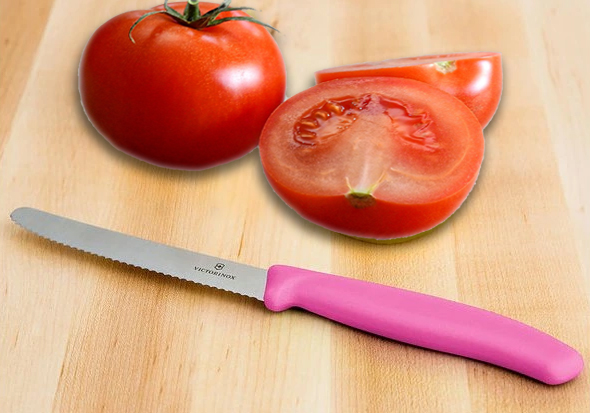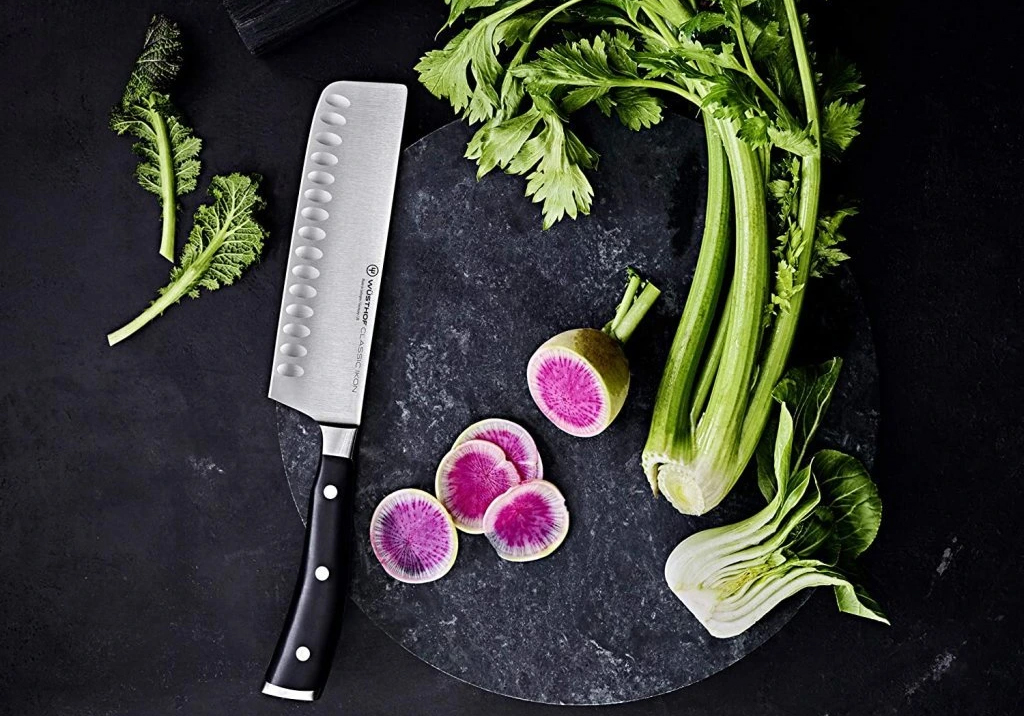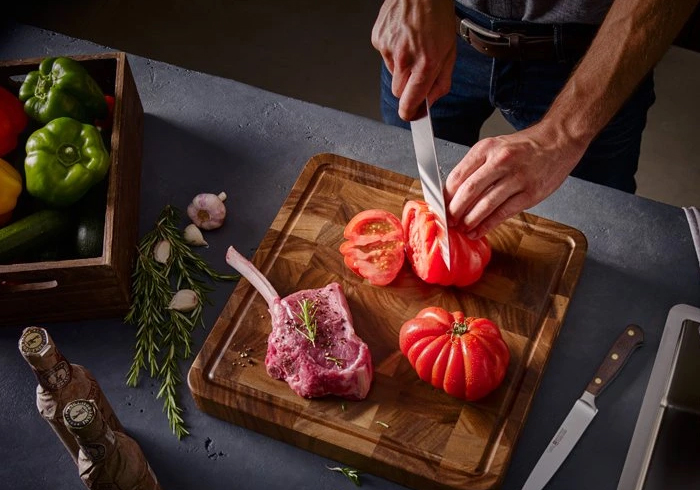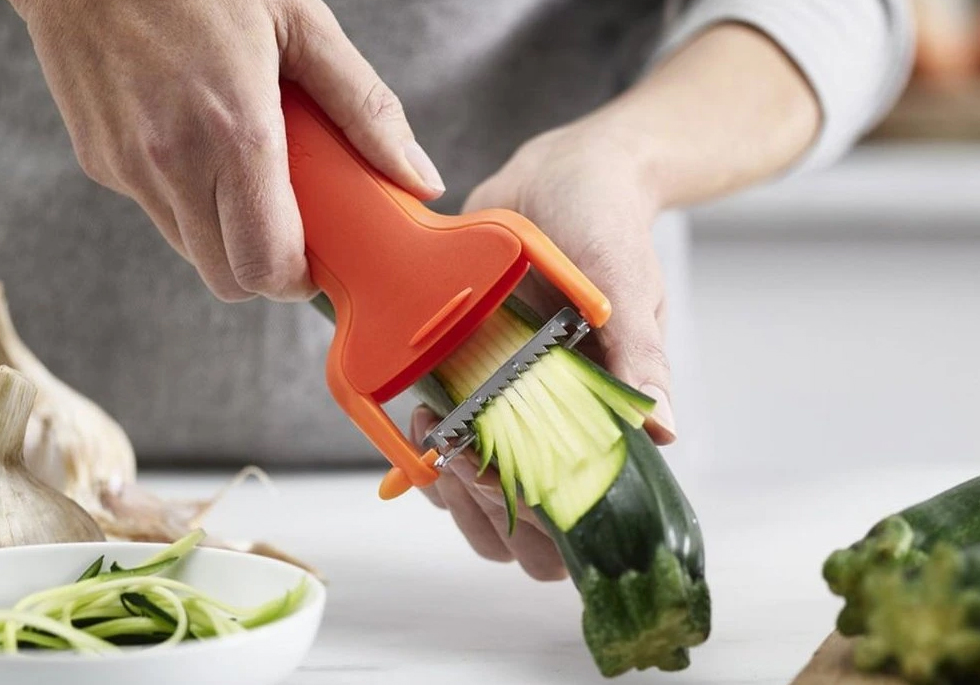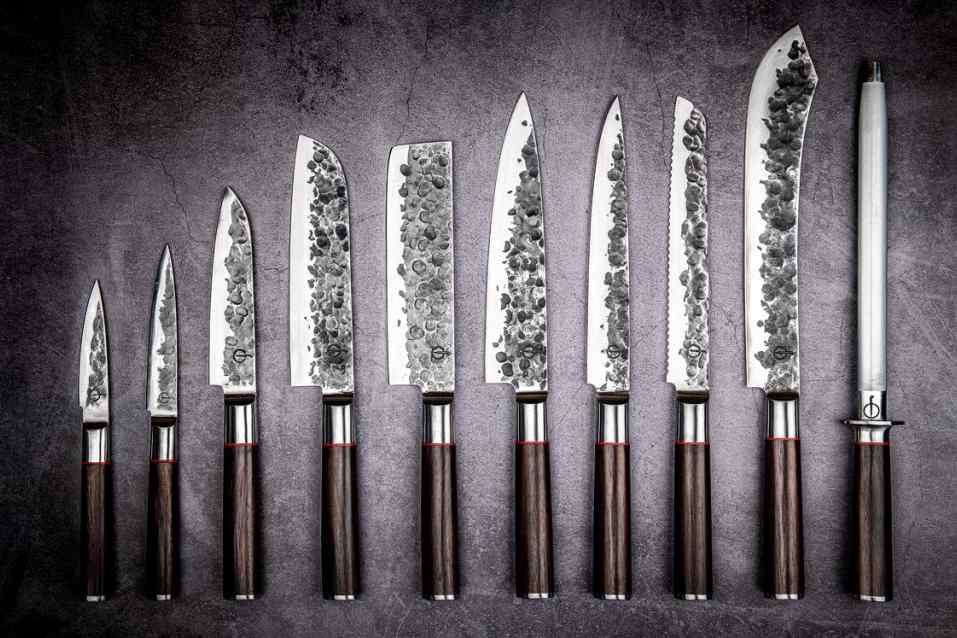Did you know that the right vegetable knife saves you a lot of time in the kitchen? Because the right blade will ensure that your slicing is smooth, fast and you won't be frustrated by stuck slices or irregular cuts. And that goes for both fine slicing of tomatoes and for cutting hard root vegetables. We'll give you tips on how to slice and dice in vegetable knives (and there are many) to get an overview and choose the right one for you.
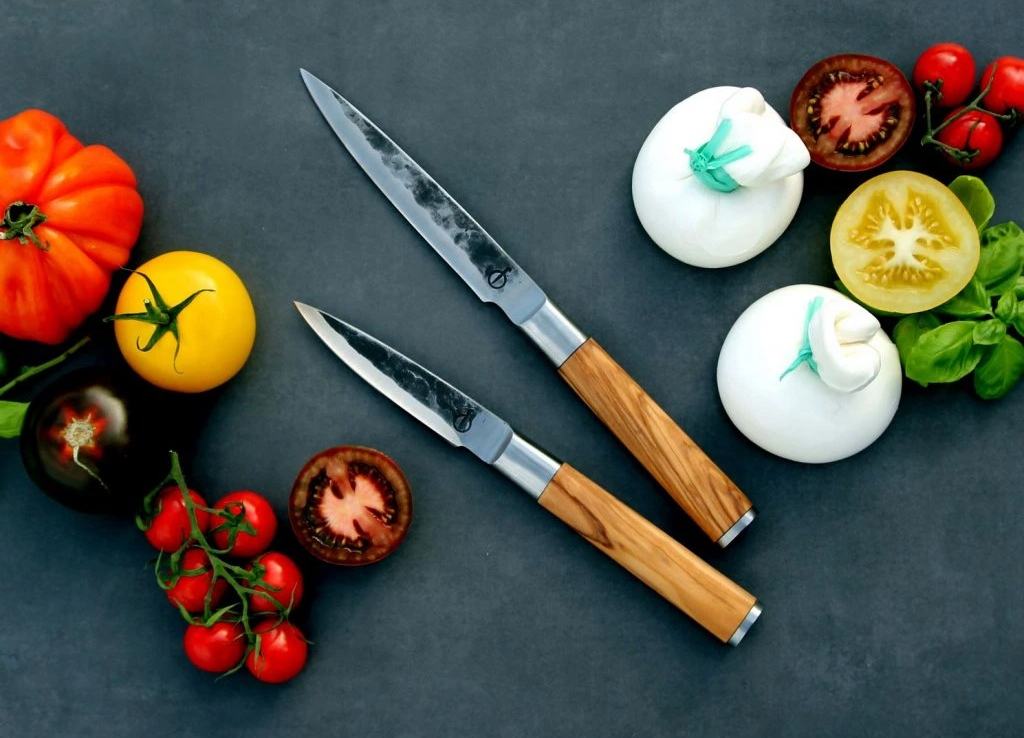
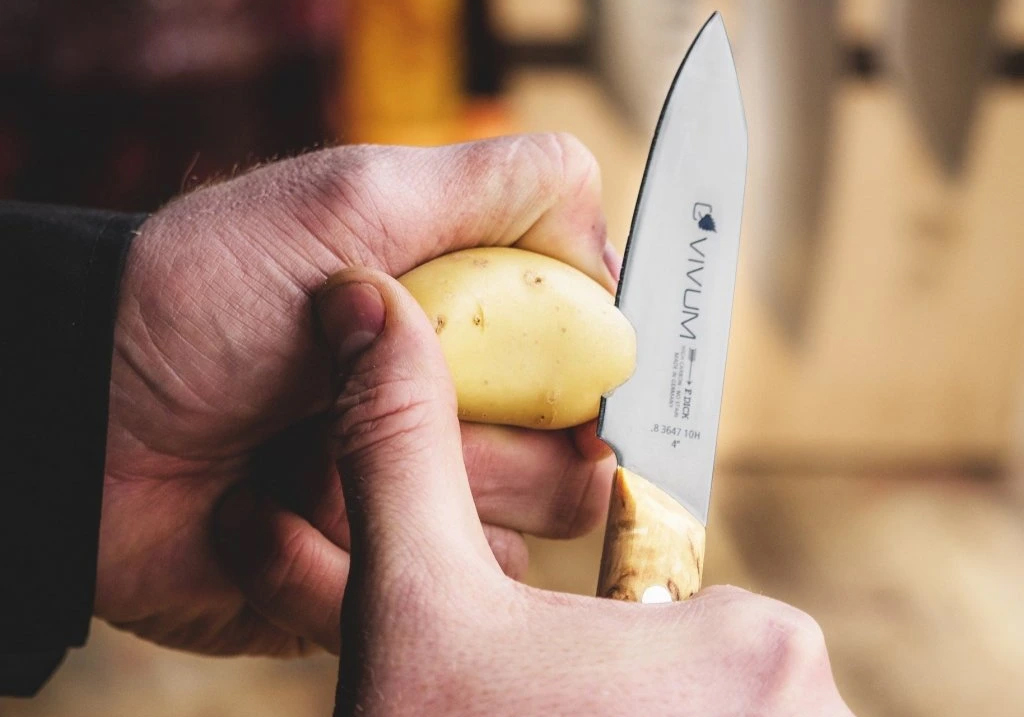
- Which blade shape to choose?
If you are looking for a tool for cutting and cropping, then choose small knife with sharp tip. If you are more likely to carve, then you need a medium-long knife with straight bladewhich guarantees perfect contact with the cutting mat during slicing and therefore minimises the occurrence of incomplete cuts. - Steel, stainless steel or other materials?
Some vegetables and fruits, especially acidic ones such as tomatoes or citrus fruits, can contain acids that contribute to corrosion and faster tool dulling. They are therefore preferable from this point of view.knives stainless. If you prefer steel knives, then remember to maintain them consistently. - What about the handle?
It should be primarily ergonomic, i.e. it should fit your hand well and ideally also be non-slip. When it comes to material, each has its pros and cons - wood is aesthetic but can show signs of wear over time, stainless steel is sleek, durable but cold and can slip, and composite or plastic handles are affordable but not very stylish.
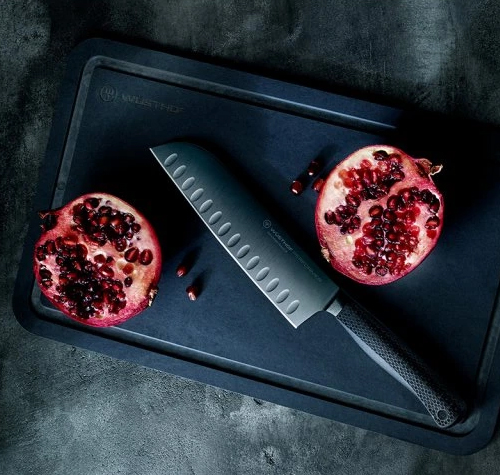
Granton edge will come in handy...
Did you know that vegetable knives can have a special finish called a granton edge? These are small depressions on the blade that create air pockets that prevent pieces of vegetables from sticking to the blade as you slice. While this is a detail, it can greatly speed up your work and improve efficiency, as you have to stop slicing less often to remove stuck slices.
Quality vegetable knives
What types of vegetable knives are there
Peeling knife
It is a smaller knife that often has a curved, 7-10 cm long blade, which makes it easier to remove the peel without unnecessary waste. It is particularly suitable for potatoes, courgettes or apples.
Edging knife
It is a knife with a thin and short blade (between 7 and 12 cm), which is ideal for precise handling of smaller fruits and vegetables. It is ideal for detailed and decorative work.
Knife for tomatoes
It is specially adapted to penetrate the tough skin of tomatoes without damaging their soft flesh. The blade is usually 10 to 15 cm long and thin with serrations.
Nakiri
It is a traditional Japanese vegetable knife that excels in extreme sharpness, allowing precise and clean cuts. The bottom edge of the blade is almost or completely straight, eliminating the appearance of incomplete cuts. The long (16-18 cm) and wide blade makes it easy to carry the cut ingredients to the pan or bowl. Nakiri knives are suitable for quick and efficient processing of large quantities of vegetables and, thanks to their higher weight, for cutting harder types of vegetables. A more versatile kitchen helper will also fulfil the same purpose, santoku knifewith which you can also cut fish or poultry. Read more about Japanese knives.
Chef's knife
Since the chef's knife is a multifunctional helper that can handle most kitchen tasks, it is also suitable for cutting vegetables, especially large and hard ones, typically pumpkins, melons, etc. The chef's knives can be small (15 cm) or large (up to 30 cm) with a slightly curved bottom edge that allows smooth swinging movements when slicing. The tip of the blade can be used for finer work with a little skill, but is not suitable for full detail work due to its overall robustness. Find out, how to choose the ideal chef's knife for your needs.
Julienne
Although it is not exactly a knife, this tool is 100% about vegetables. Julienne is a peeler with a special blade that allows you to create fine and at the same time even strips. The blade of the julienne peeler can be smooth or serrated depending on the desired final shape of the raw material. It is often used to create decorations. The same attention deserves to be paid to the mandolinswith which you can conjure up shapes that will decorate any dish.
The most popular Japanese knives according to our customers' reviews

Jakub Černý recommends:
All in all, you can certainly find a use for all the tools listed above in your kitchen from time to time, but if you want to avoid having too large an arsenal, one small (paring or peeling) and one large (nakiri/santoku or chef's) knife will do.
Comparison of materials
What the vegetable knife is made of
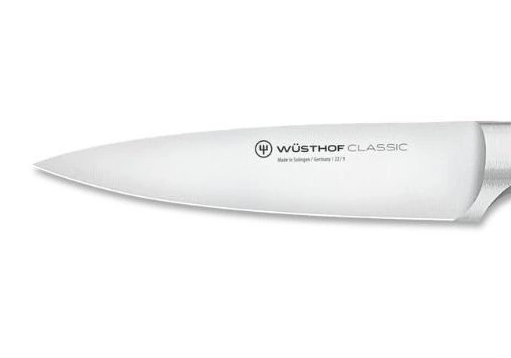
Vegetable knives can be made from a variety of materials, each with its own advantages and disadvantages:
- Stainless steel - it is corrosion resistant, low maintenance and long lasting, but it is a softer material and may require more frequent sharpening.
- Carbon steel - it is very sharp and easy to sharpen, but it is more prone to rust and stains, so it requires a bit more care.
- Ceramics - is lightweight, very sharp and highly resistant to corrosion, but at the same time it is fragile and therefore more susceptible to damage. In addition, it is difficult to sharpen in domestic conditions.
- Damascus steel - is famous for its attractive design and high hardness, which is closely related to its famous sharpness. On the other hand, it is a more costly material that is prone to corrosion and therefore requires some care.
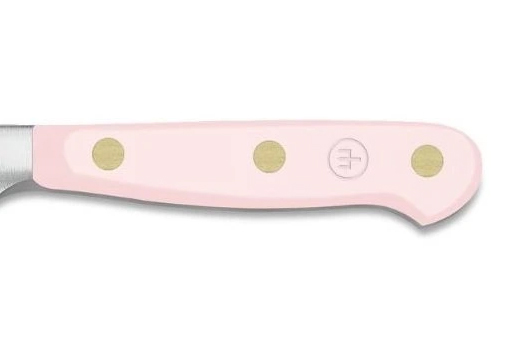
Like the blades, the handles of vegetable knives can be made of different materials, which have their pros and cons:
- WoodThe - is very aesthetic, pleasant to the touch and usually fits well in the hand, but at the same time it should be taken into account that it requires some care and after a while it may show signs of wear and tear.
- Metal - usually stainless steel or titanium, which are highly durable and visually timeless materials that are easy to maintain. However, they can be cold, heavy and, if not textured or if they get wet or greasy, slippery.
- Composite - (such as Micarta) is made of layers of canvas, paper, fibreglass and resin, making it a highly durable and strong material that is also pleasant to the touch. However, the manufacturing process is laborious and so the material is relatively expensive.
- Plastic - easily resists moisture, does not require heavy maintenance and will not cost you money. However, it may not look very stylish.
Popular vegetable peelers
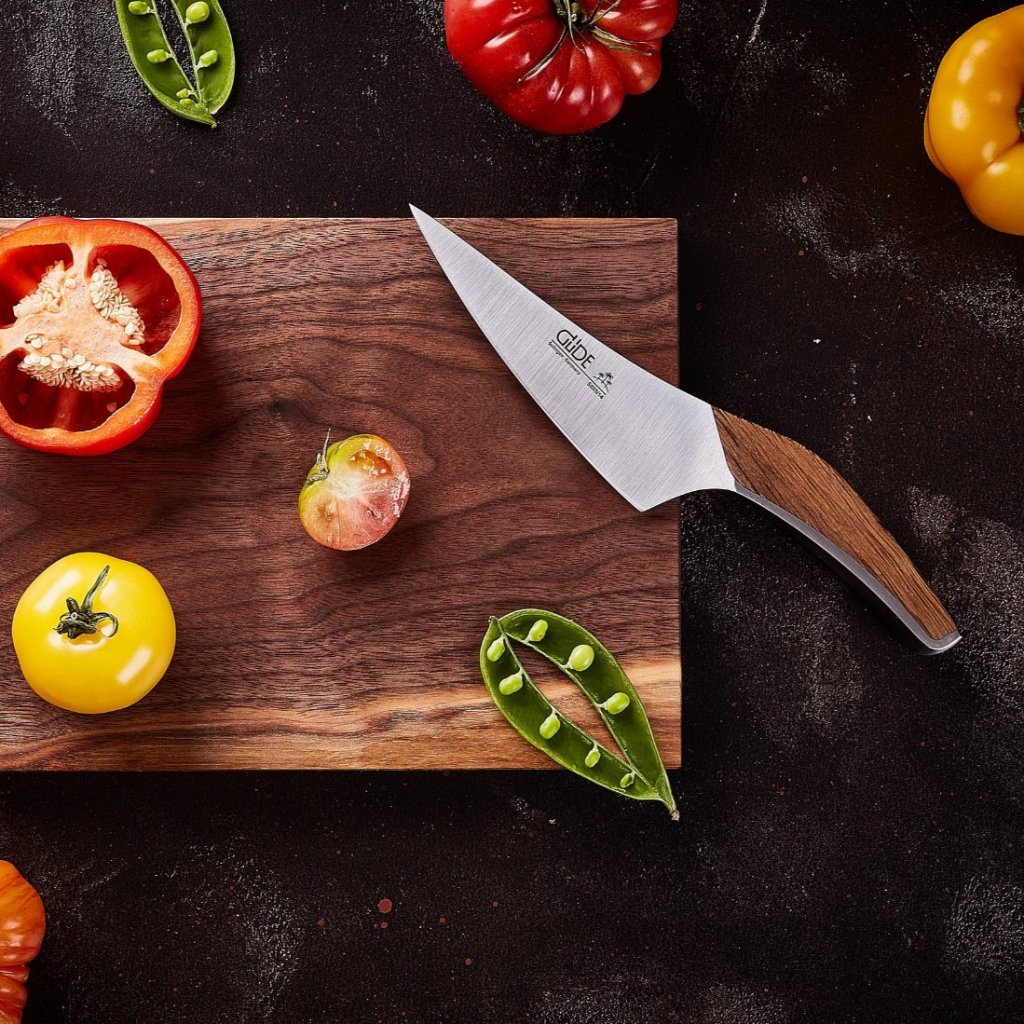
The care of vegetable knives is not demanding, but it is absolutely crucial to maintain their longevity and sharpness:
- Hand washing: Always wash the knives by hand with warm water and mild detergent. Avoid washing in a dishwasher, which can damage the blade and handle, and avoid abrasive products and harsh sponges.
- Instant drying: After washing the knife, immediately dry it with a soft cloth. This will prevent corrosion.
- Regular grinding: Sharpen the knives regularly. With daily use about 1x per month, with less frequent use once every 3-6 months. Always use for sharpeningwhetstones or grindersthat are suitable for the specific type and material of the knife. Have your knives professionally sharpened once a year.
- Proper storage: Store knives in special blocks, magnetic rails, protective sleeves or drawer organisers to prevent wear and tear or damage. Never store knives loose in a kitchen drawer.
- Using the cutting board: For cutting, use only wooden or plastic cutting boards. Other materials could damage or dull the blade.
The most popular whetstones and sharpeners according to our customers

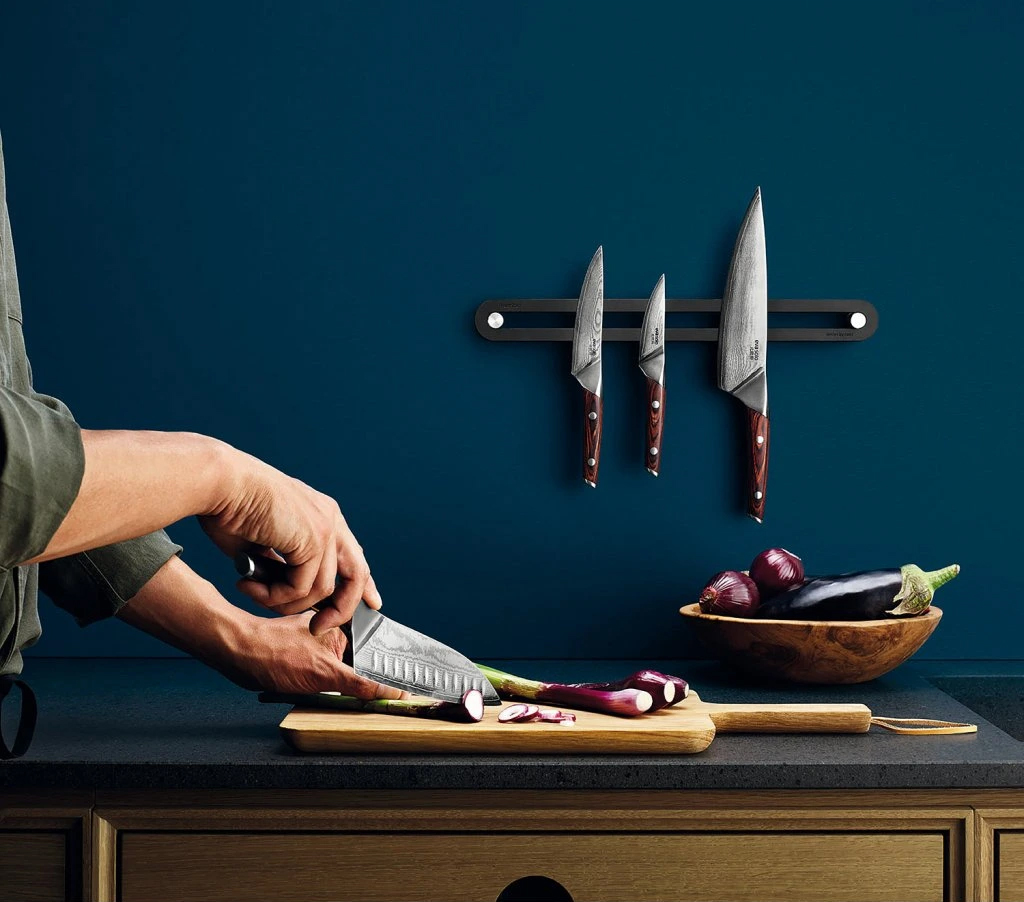
Top vegetable knife manufacturers
If you're looking for a perfectly functional and at the same time highly designed piece, which is especially true for Nakiri knives, rely on those from Dellinger or Miyabi.
Other manufacturers that have long enjoyed popularity among amateur and professional chefs include Victorinox, Zwilling or WMF.


